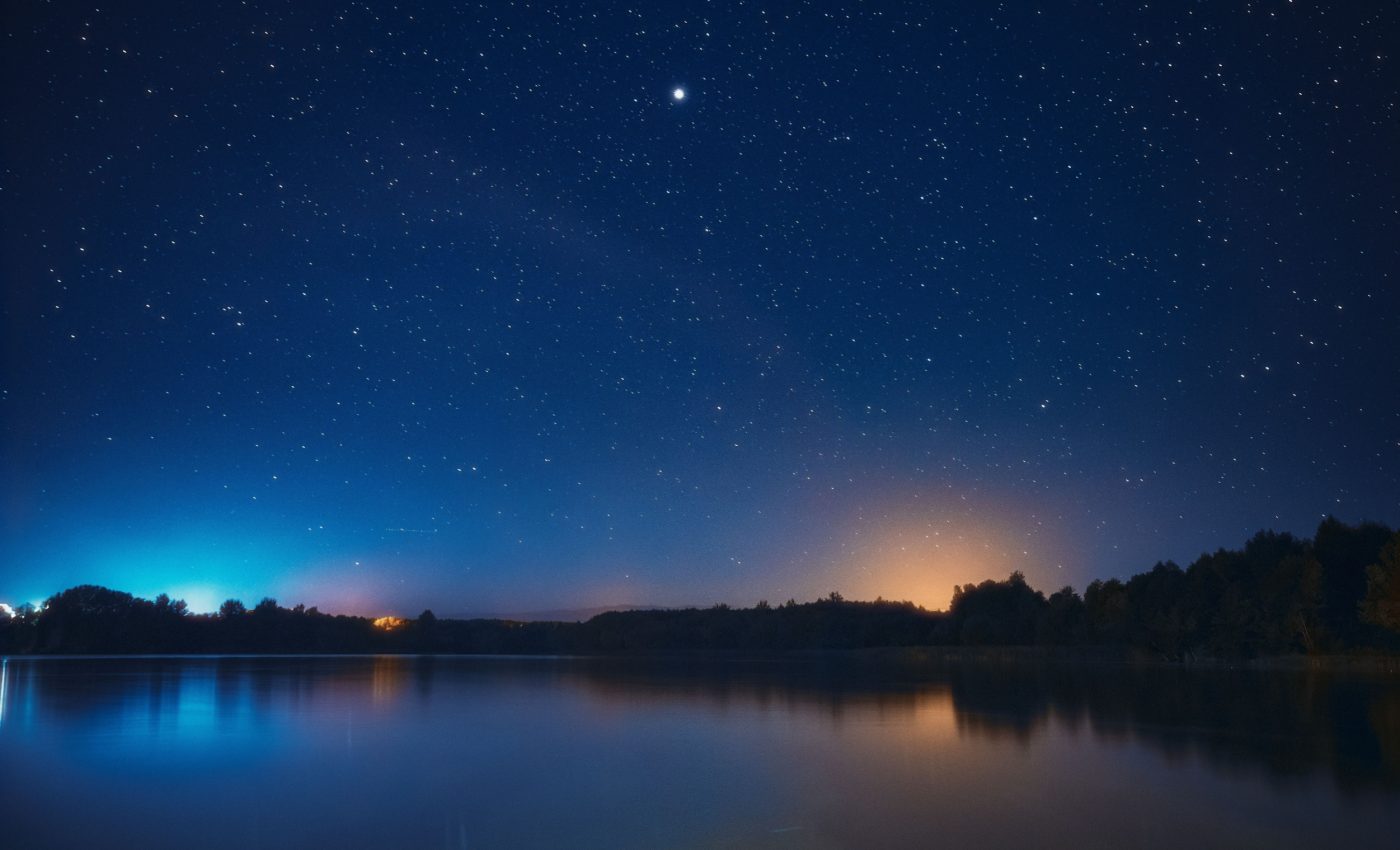
Scientists build ingenious device that can generate electricity from the cold night sky
On clear nights, Earth quietly leaks heat into space. Engineers at UC Davis have now shown that this natural cooling can create a steady energy flow.
Their small outdoor engine used the night sky as a cold reservoir, maintained a strong temperature difference overnight, and delivered enough power to run a small fan. The study demonstrates a new way to harvest nighttime energy using passive physics.
Night sky generates power
The work was led by Dr. Jeremy Munday at the University of California, Davis (UCDavis). His research centers on clean energy photonics and radiative thermal devices.
On clear nights, the sky acts as a heat sink that draws energy away through radiative cooling – heat lost to space as infrared light.
A sky-facing surface that emits strongly can fall well below the air temperature without pumps or compressors.
At night, the radiator cools through a clear band of wavelengths in the atmosphere that leaks heat to space. This band is often called the atmospheric window, a set of infrared colors where the air is most transparent.
The bottom plate follows soil warmth, which changes through the night compared to the air. That steadiness helps the engine keep turning while the top plate sheds heat to space.
What the experiments showed
In Davis, the setup kept a steady temperature difference of about 18 °F (-7.8 °C) between its warm and cool plates for long stretches. That was enough to run the engine near one turn per second and deliver usable shaft power.
The team reports potential for several watts per square meter using better components. In one trial the device directly turned a fan and, with a small motor attached, also generated a modest electric current.
“These engines are very efficient when only small temperature differences exist. If you just set it on the table, it’s not going to produce any power on its own,” said Munday.
Heat changes power performance
Dry air and clear skies help the radiator shed heat. Humid nights cut the effect because water vapor glows in the same infrared bands the radiator needs to use.
Global maps built from NASA’s CERES radiation data show where the downwelling infrared from the sky is lowest, which favors larger temperature gaps.
Land surface temperatures from MODIS, an Earth-observing instrument, provide the warm side of the picture.
NASA’s MODIS land surface temperature product supplies monthly global maps. The strongest potential appears in arid zones and at high, dry elevations where the air is thin and moisture is scarce.
What the night sky could power
The group showed air movement near one foot per second in a greenhouse-like temperature setup, enough to circulate carbon dioxide around leaves.
That speed aligns with comfort ranges near 0.5 to 0.7 foot per second, according to ASHRAE, the U.S. standards body for building comfort.
They also noted airflow rates that approach about 5 cubic feet per minute per person, which appears in ventilation guidance for many public spaces.
That figure appears in an official interpretation of ASHRAE 62.1 that shows how designers combine per person and per area outdoor air.
Basics of Stirling engines
A Stirling engine, an external heat engine that turns a temperature difference into motion using a sealed gas, thrives on small temperature gaps.
It uses two pistons and a regenerator to shuttle gas between warm and cool zones so gas expands, then contracts, keeping a flywheel turning.
Real machines are limited by Carnot efficiency, the absolute ceiling for any heat engine that depends only on the hot and cold temperatures.
The UC Davis setup runs well at low differences because Stirling engines waste little when designed for gentle pressure swings.
Building night sky power systems
Performance can rise if the radiator couples more strongly to the sky and the warm plate couples better to the ground.
Tailored coatings and thin film stacks can boost emissivity in the atmospheric window and can reflect sunlight during the day.
A vacuum enclosure around the radiator would curb convective heat leaks. Careful seals and lightweight supports make that upgrade realistic.
Future versions could run in daytime by reflecting sunlight while still radiating heat in the right infrared bands. Stronger thermal contact with soil or water could also amplify the temperature gap without enlarging the radiator.
Reducing friction and matching the motor to the torque and speed would lift electrical output. The engine could also use waste heat from farms or factories on the warm side to raise the overall temperature gap without new fuel.
Meeting nighttime power needs
Running a fan without a grid connection sounds modest, yet it fills an overlooked need. Greenhouses need steady air movement at night when plants take up carbon dioxide and humidity creeps up.
Buildings need gentle flow for comfort, even when heating and cooling systems are idle. A rooftop unit that moves air with no electricity could support health goals while trimming loads after dark.
The study’s global maps relied on downwelling infrared, the heat the sky sends toward the surface from air and clouds.
This value, combined with local ground temperature, sets the ceiling on the temperature gap a radiator can achieve at a given time and place.
As with any passive system, output rises and falls with local weather and siting. Shade, wind, and surface materials can change the effective temperatures that the engine actually sees.
The study is published in Science Advances.
—–
Like what you read? Subscribe to our newsletter for engaging articles, exclusive content, and the latest updates.
Check us out on EarthSnap, a free app brought to you by Eric Ralls and Earth.com.
—–













